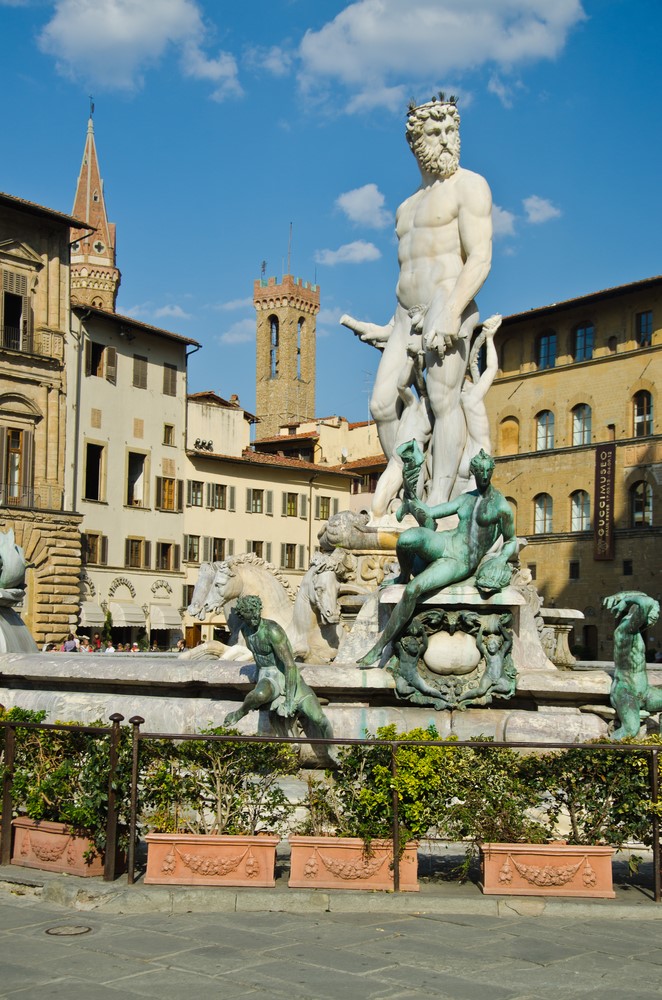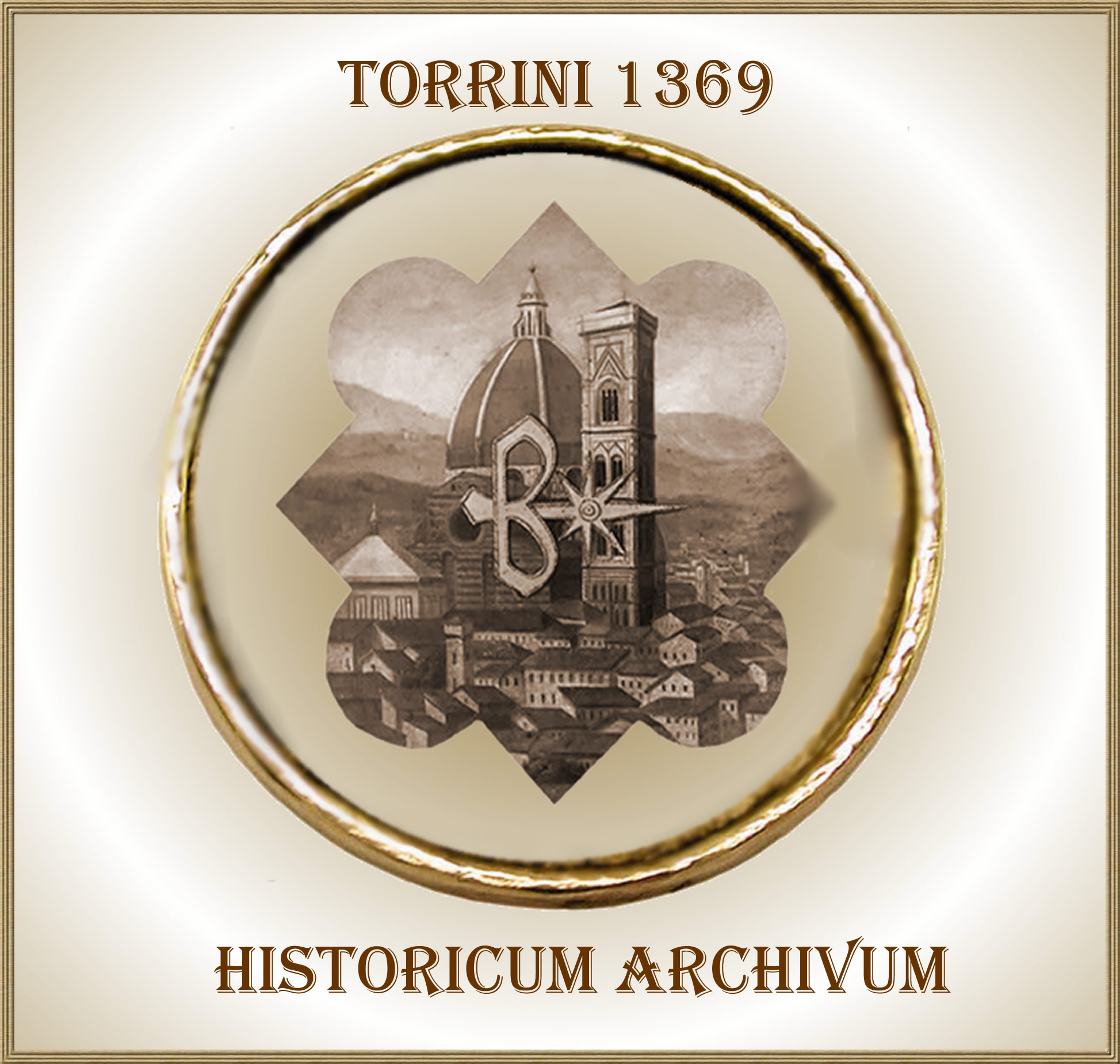- Home
- FLORENTINE STORIES
- i' Biancone in Florence
Neptune, the divinity of ancient Rome,
in Florence it takes the name of Biancone!
("Florentine Stories " by Franco Torrini)
 It all started with a dispute between spouses. On one side,the powerful and famous Cosimo I de Medici, and on the other, his wife the Duchess Eleonora da Toledo. One depicted as a passionate protector of the great Benvenuto Cellini, and the other as the Duchess for the lesser known Baccio Bandinelli.
It all started with a dispute between spouses. On one side,the powerful and famous Cosimo I de Medici, and on the other, his wife the Duchess Eleonora da Toledo. One depicted as a passionate protector of the great Benvenuto Cellini, and the other as the Duchess for the lesser known Baccio Bandinelli.
Florence in 1559, was the year in which Cosimo I de Medici, Duke of Florence, was named Duke of Siena which he fought over; following the treaty of Le Cateau-Cambrésis. His power was at its apotheosis with the creation of the Grand Duchy of Tuscany and his noble refined wife Eleonora of Toledo, the daughter of the Viceroy of Naples. Eleonora payed attention to the arts, which Florence had great protagonists such as Bronzino, Vasari and Cellini. She used her influence and authority to ensure that the task of the“Biancone” was assigned to Bandinelli, who died shortly after wards. The Duchess did not lose hope and used her refined diplomacy so that the sculpture, already sketched by the goldsmith Bandinelli, was assigned to her beloved pupil Bartolomeo Ammannati.
The mythological subject, Neptune, was later ironically called by the Florentines "i’ Biancone". A fountain was also created for the statue, as a tribute to the maritime supremacy achieved by Florence at the time, and the edges of the fountain were decorated with masterpieces by Giambologna.
Ammannati began to work around 1560 by placing him self under the Loggia della Signoria and the statue was inaugurated on December 10, 1565; on the occasion of the sumptuous wedding of Francesco I de Medici with Giovanna of Austria. In the meantime, Eleonora of Toledo had disappeared and Cosimo I had retired to the Villa di Castello in 1564, where he then died in 1574.
The completion of all the components of the fountain were completed in 1575. The Florentines, in addition to wisely calling the famous sculpture "I’ Biancone", they summarized their polemical verve with the phrase: "Ammannato, Ammannato, how much marble you have wasted!"where perhaps for the first-time rivalry was shown between the famous Benvenuto Cellini and Ammannati.
The transformation of the fountain, which was initially used as a wash house, unfolded over time with vandalism and acts that damaged the great work. For this reason, there is a plaque in Palazzo Vecchio dating back to 1720 which strictly forbids interaction around and inside the fountain.
In 1830, during carnival celebrations, some pseudo artists stole one of the bronze statues of Giambologna and to this day has not been found.
The "Biancone" still dominates in Piazza della Signoria today as an actor and living testimony of the strong-minded Florentine spirit, immense in criticism and unenthusiastic when recognizing a concept of great beauty. The last restoration was completed in March 2019, after two years of careful work financed by the patronage of Casa Ferragamo, to reinstate its color white, influencing Piazza della Signoria in Florence with its grim and fierce attitude.



